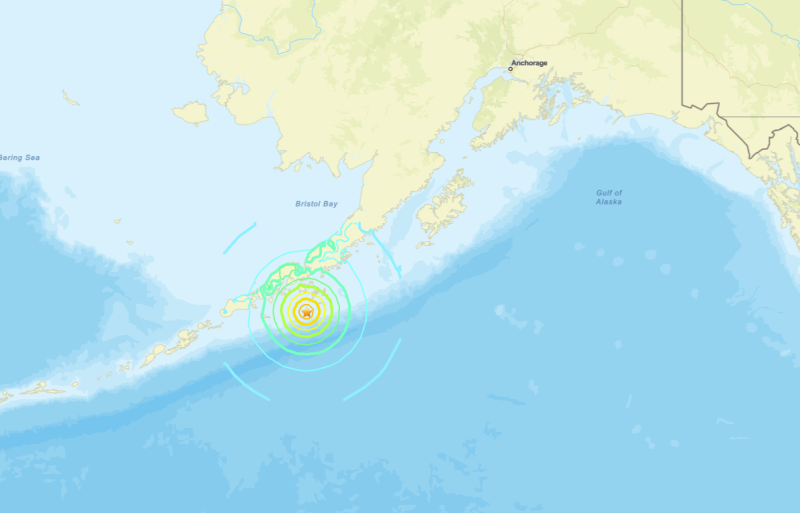Alaska's Seismic Awakening: Understanding the Recent Tsunami Alert and Coastal Preparedness
Alaska, a land of breathtaking beauty and formidable natural forces, recently experienced a powerful reminder of its dynamic geology. On July 16, 2025, a significant 7.3-magnitude earthquake struck off the coast of the Alaska Peninsula, near the community of Sand Point, triggering an immediate tsunami warning across a vast stretch of the southern coastline. While the immediate threat quickly subsided, this event underscores the critical importance of tsunami preparedness and understanding the seismic activity that defines this rugged frontier.
For coastal communities and those with vested interests in natural disaster preparedness, the Alaska earthquake and subsequent tsunami alert serve as a vital case study in rapid response and resilience.
The 2025 Sand Point Earthquake: A Near Miss
The magnitude 7.3 earthquake, centered approximately 54 miles (87 kilometers) south of Sand Point, occurred at 12:37 PM local time. Its relatively shallow depth of 12 miles (20.1 km) was a key factor in prompting the tsunami warning issued by the National Tsunami Warning Center (NTWC). Coastal areas from Kennedy Entrance to Unimak Pass were urged to evacuate low-lying zones, with communities like Kodiak, Unalaska, King Cove, Cold Bay, and Homer enacting emergency protocols.
Fortunately, monitoring confirmed only a minor sea-level change of about 3 inches (0.2 feet) near Sand Point, and the warning was subsequently downgraded to an advisory and then canceled within a few hours. No significant damage or injuries were reported, a testament to effective early warning systems and public responsiveness. This "lucky side" outcome, as some seismologists noted, highlights the fine line between a significant event and a major disaster in such geologically active regions.
Alaska's Tsunami Risk: A Deep-Seated Reality
Alaska's position on the Pacific Ring of Fire makes it one of the most seismically active regions globally. This "Ring" is a horseshoe-shaped belt around the Pacific Ocean where a large number of earthquakes and volcanic eruptions occur, due to the movement of tectonic plates. The Aleutian Trench, where the Pacific Plate dives beneath the North American Plate, is a major source of tectonic earthquakes capable of generating devastating tsunamis.
Tsunamis in Alaska can arise from several sources:
Tectonic Earthquakes: Caused by the sudden displacement of the ocean floor during large underwater quakes.
Landslides: Massive collapses of land into the ocean, often triggered by earthquakes, which can create localized but incredibly powerful "megatsunamis," like the infamous 1958 Lituya Bay event. Scientists are increasingly concerned about landslide-induced tsunamis as glacier melt reduces natural slope stability.
Volcanic Activity: Underwater volcanic eruptions or flank collapses can also displace water to generate waves.
Alaska experiences various types of tsunamis: distant tsunamis (originating from far-off quakes in the Pacific), regional tsunamis (generated within a few hours' travel time), and local tsunamis (which can strike within minutes of an earthquake, leaving little time for official warnings). The July 16th event fell into the local/regional category, necessitating rapid, instinctual response from coastal residents.
Mastering Tsunami Preparedness: Lifesaving Strategies
Effective tsunami preparedness is non-negotiable for anyone living, working, or visiting Alaska's coastlines. Here's how individuals and communities enhance their safety:
Know the Natural Warnings: If you are near the coast and feel a strong earthquake (one that makes it hard to stand), see an unusual change in sea level (a sudden receding of water exposing the seafloor), or hear a loud roar from the ocean (like a train or jet plane), a tsunami could be imminent. Do not wait for an official warning – move immediately to high ground.
Understand Official Alerts:
Tsunami Watch: A distant earthquake has occurred; a tsunami is possible. Be aware and monitor information.
Tsunami Advisory: A tsunami with dangerous currents or waves is expected or occurring. Stay out of the water and away from beaches.
Tsunami Warning: A dangerous tsunami capable of widespread inundation is expected or occurring. Evacuate immediately to high ground (at least 100 feet above sea level or 1 mile inland).
Develop an Evacuation Plan: Know your community's tsunami evacuation routes and designated safe zones. Practice these routes with your family.
Assemble an Emergency Kit: Keep a portable kit with essential supplies: water, non-perishable food, first-aid, medications, a battery-powered radio, flashlight, and important documents.
Stay Informed: Sign up for local emergency alerts via phone, text, or email. Utilize reliable sources like NOAA Weather Radio, the National Weather Service (NWS), and local news.
Advancements in Monitoring and Prediction
The rapid response to the 2025 Sand Point event was facilitated by sophisticated seismic monitoring networks and dedicated warning centers:
Alaska Earthquake Center (AEC): Continuously monitors seismic activity across Alaska, providing real-time data on earthquakes.
National Tsunami Warning Center (NTWC): Located in Palmer, Alaska, the NTWC monitors seismic activity across the entire Pacific and issues tsunami watches, advisories, and warnings for the U.S. and Canada.
Pacific Tsunami Warning Center (PTWC): Based in Hawaii, it provides warnings for international Pacific communities.
ShakeAlert® System: An earthquake early warning system being expanded into Alaska, providing seconds to tens of seconds of warning before destructive shaking arrives. This system, which utilizes seismic stations and GNSS (GPS) data, also significantly improves the speed and accuracy of tsunami forecasts.
These technological advancements, coupled with ongoing research into geological hazards and tectonic plate movement, are continuously refining our ability to predict and respond to tsunami threats, giving precious moments that can save lives.
Conclusion: Vigilance in a Dynamic Landscape
The July 16, 2025, Sand Point earthquake and its associated tsunami alert served as a powerful testament to both Alaska's inherent natural disaster risks and its robust emergency response capabilities. While the immediate danger passed without significant incident, the event is a crucial reminder that living in such a geologically active region demands constant vigilance and thorough coastal preparedness.
By understanding the science behind tsunamis, recognizing natural warning signs, and adhering to official alerts, communities and individuals across Alaska can continue to thrive amidst the profound and powerful forces of nature.

